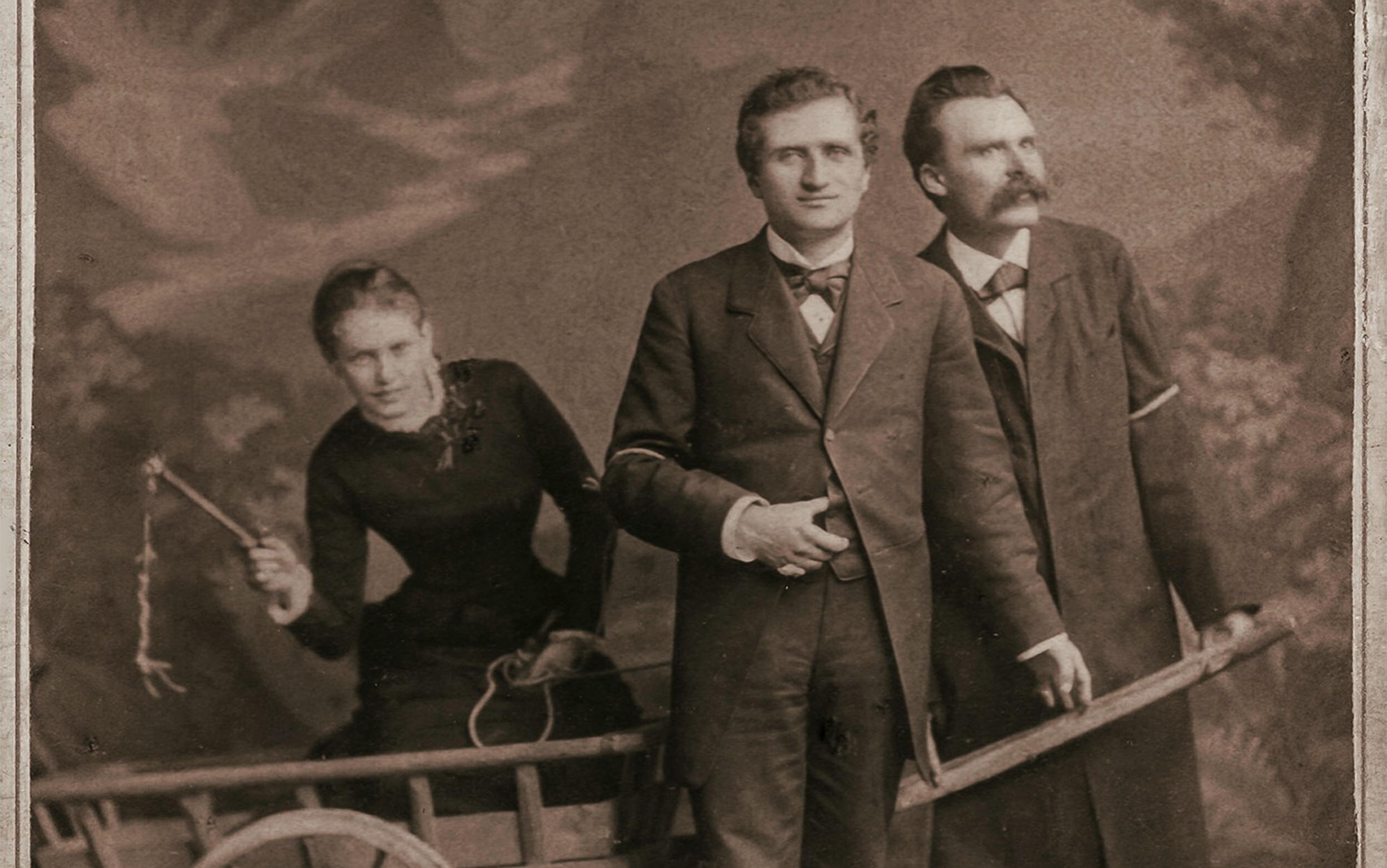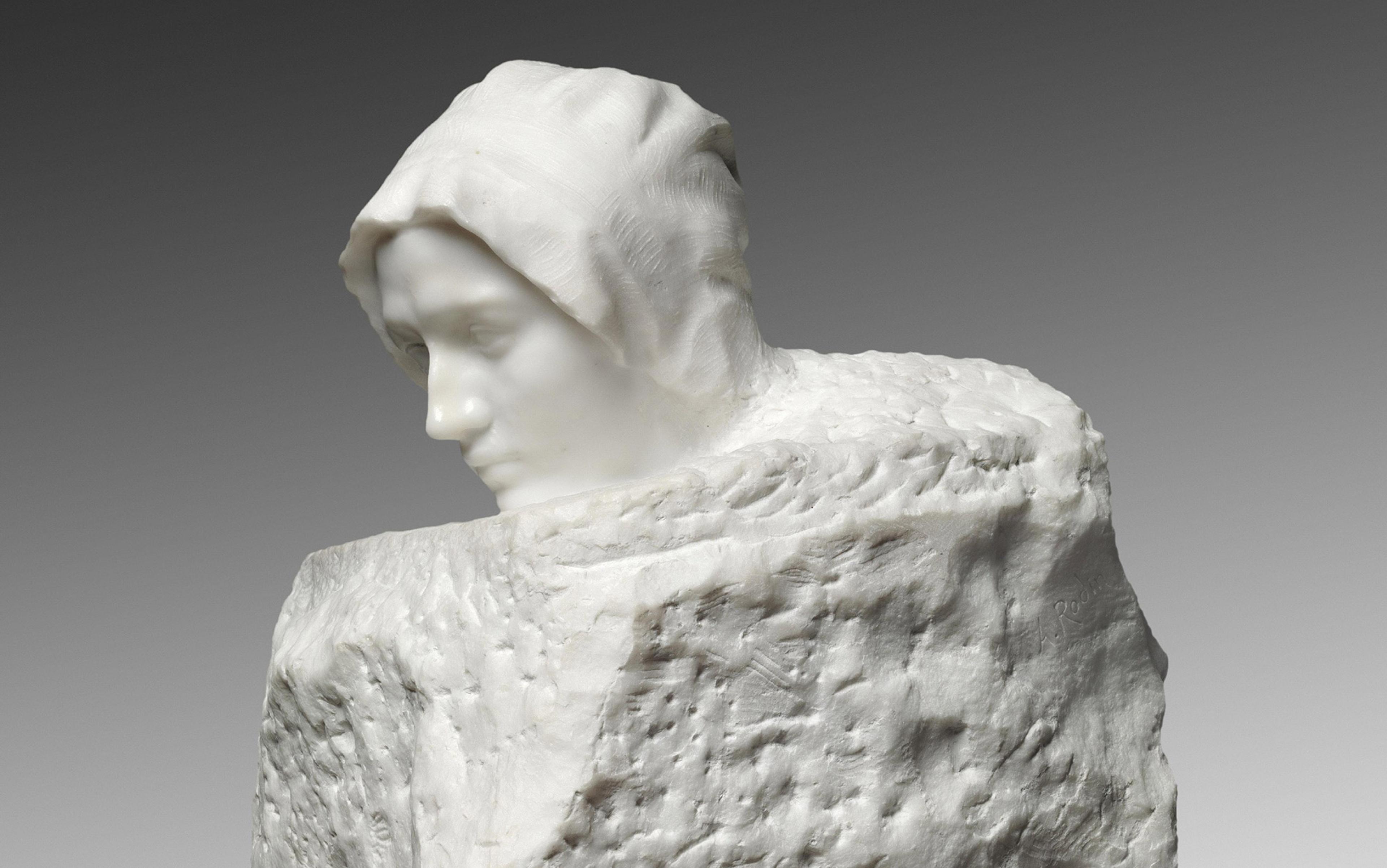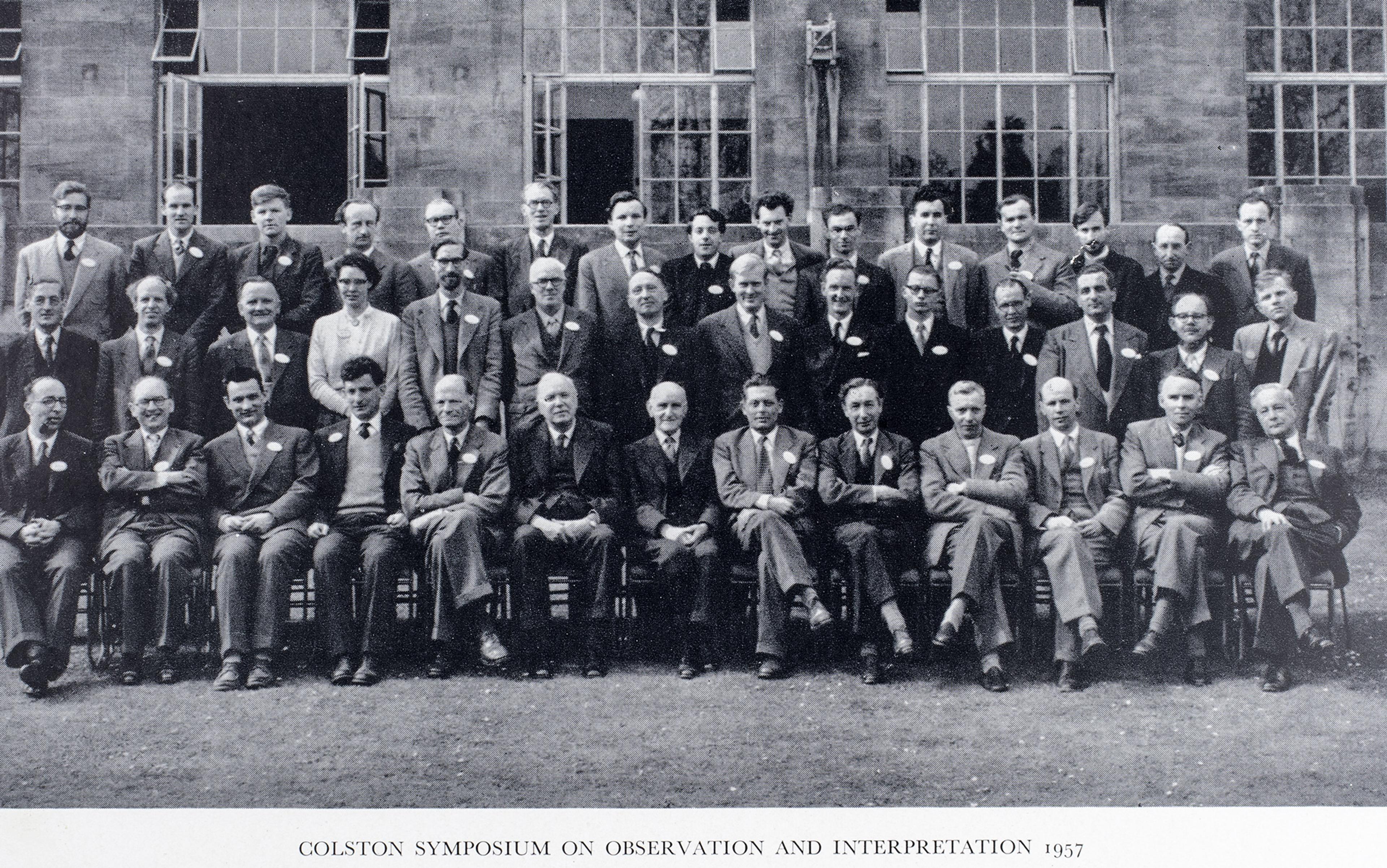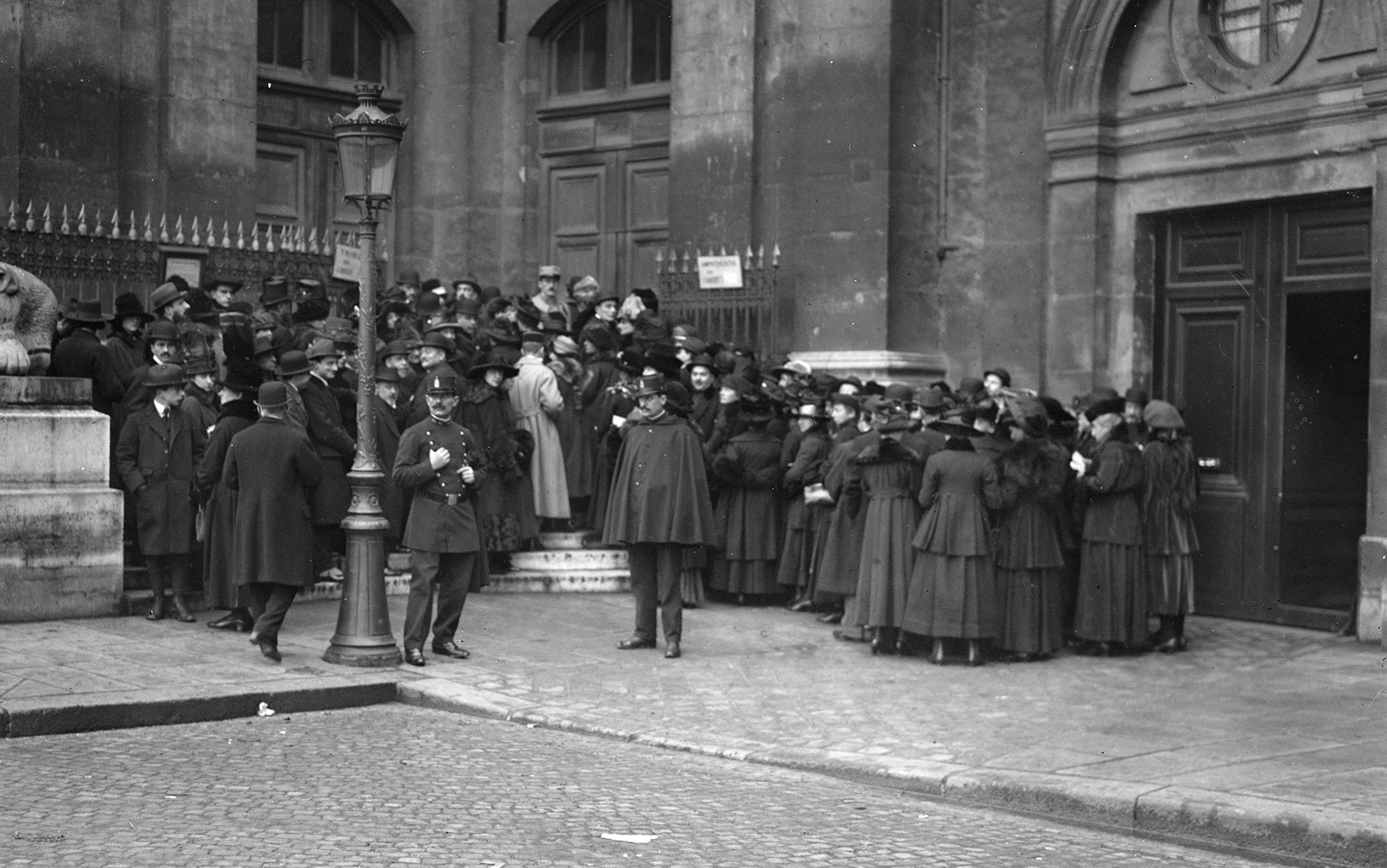Hegel, Kierkegaard, Marx and Nietzsche – there is no shortage of geniuses in 19th-century philosophy. This, for many of us, is the philosophy we first fell in love with: a philosophy that asks deep existential questions while, all the same, analysing modern society with razor-sharp categories and concepts. The period got even more exciting when, over the past decades, new names were added to the canon. With new names came new philosophical questions, ideas and topics. The Schlegel brothers developed an ultra-avant-garde aesthetics well before the modern avant-gardes. Friedrich von Schelling offered path-breaking approaches to nature. Friedrich Schleiermacher gave us a promising philosophy of individuality and cultural diversity. Friedrich Jacobi and Johann Georg Hamann showed how modern philosophy, with its departure from the thinking I, can lead to scepticism. Our understanding of 19th-century philosophy was, it seemed, finally complete.
It does not take much attention to realise that the names above are all male. Had women no role to play in one of the most exciting and productive moments in the history of philosophy?
A quick look at the broader cultural field reveals some familiar figures. Lou Salomé and Rosa Luxemburg are perhaps the most well known among them. Indeed, they are sufficiently famous for their lives to have been turned into movies (in 2016 and 1986, respectively).
In popular culture, Salomé is portrayed as a femme fatale, a collector of male geniuses. Nietzsche, Rilke and Freud are all said to have fallen for her; Frank Wedekind’s Lulu cycle offers a dramatic tribute. It is, in other words, the men in her life that make her interesting. Indeed, as one book title has it, we are here presented with ‘Nietzsche’s wayward disciple’ – not exactly an invitation to read her book The Erotic (1910) and other pathbreaking works on human embodiment and psychology.
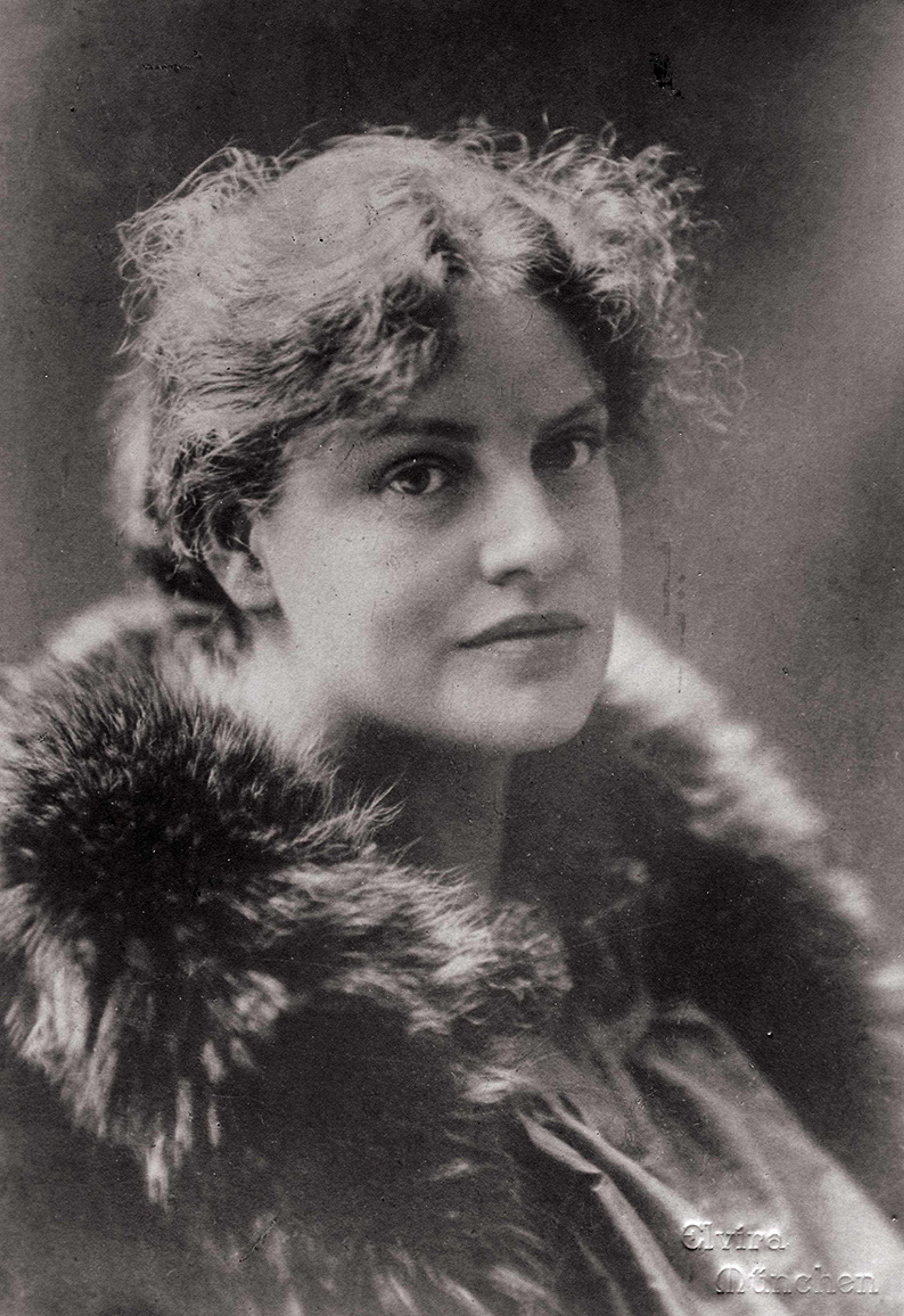
Lou Andreas-Salomé (c1897) by Foto Atelier Elvira. Courtesy Wikipedia
Luxemburg incarnates a different female model. We know less about her political philosophy than about her patient suffering while imprisoned in the lead-up to the First World War. Her tragic death is familiar: she was hit on the head, shot, and her body dropped in the Landwehr Canal in Berlin shortly after she and Karl Liebknecht had established the Spartacus League, the predecessor of the Communist Party of Germany.
Two very different women, two very different fates. But in both cases, the reason we still know their names today is some aspect of their lives, not their philosophies. Yet they both made significant philosophical contributions, which should be better known.
And so we ask again: were the women, among the male luminaries from Kant to Nietzsche and beyond, no more than muses and martyrs? Did women make no contributions that we can attend to with the same scholarly attention that we pay to the works of Hegel, Kierkegaard and Nietzsche?
Salomé and Luxemburg did not stand at the periphery of the philosophical debates of their time. They were at the very centre of them. Salomé discussed philosophy with Nietzsche, poetry with Rilke, and psychoanalysis with Freud. She published a pathbreaking study of Henrik Ibsen’s philosophical heroines (1892), and Martin Buber commissioned her to write The Erotic. In it, Salomé develops the view that embodiment serves as a basis for selfhood and also for intersubjective relations. Indeed, she transforms and expands the very idea of eroticism so that its narrow connection to sexuality emerges as the mere tip of an existence that is sensual at its core – if we allow it to be, that is. Her psychoanalytic work offers radical interpretations of female narcissism and explores the idea of bisexuality. The list goes on.
Similarly, Luxemburg was a trailblazer in getting her PhD in economics from the University of Zurich in 1898. Her activism changed socialist politics in Germany and beyond; her theoretical work changed its philosophical outlook. In The Accumulation of Capital (1913), Luxemburg provides a detailed analysis of the relationship between capitalism and imperialism – both its global form and the accumulation of non-capitalist pockets more locally (the commercialisation of childhood, of education: the examples abound). She argues that capitalism needs imperialism, but also that the imperialist project must itself be transformed to involve a capitalist component. It is by ‘developing’ the colonised world that imperialism serves the needs of capitalism. It was her ideas, not her life, that led the German officials to brutally murder her, thus also silencing her for good.
There is no need to focus on the lives of Salomé and Luxemburg at the expense of their thoughts. While their lives were indeed extraordinary – probably more so than the male philosophers mentioned above – it does not follow that their philosophical contributions are less profound. And what is more, the well-known names of Salomé and Luxemburg are only the tip of an iceberg. Once you begin to look a little further, it becomes clear that the 19th century, the century of Hegel, Kierkegaard, Marx, Schopenhauer and Nietzsche, was indeed a particularly rich and prosperous period for women philosophers. In this period, women philosophers contributed to just about each and every area of philosophy. And they did so in original and profound ways. A quick look at the debate about the human vocation – about what a human being is for – can illustrate the point.
Already, Holst argued that we can’t determine human vocation independently of gender, history and culture
Kant, Schleiermacher and Fichte all participated in the debate about the human vocation. But so did many women. Importantly, their voices did not simply reiterate the ideas of male philosophers. Rather, the women asked new questions, challenged basic premises, and extended the notion of vocation in path-breaking ways. Two examples of this are Amalia Holst and Karoline von Günderrode.
In contrast with her male contemporaries, who derided the very idea of women’s ‘vocation’ and argued that women do not possess the acumen for intellectual achievement, Holst focused on women’s vocation and the relation between education and vocation. In her On the Vocation of Women to Higher Intellectual Development (1802), Holst argues, first, that women should not be excluded from seeking to achieve their vocation on account of sexual ‘duties’ (as some male philosophers sought to demonstrate); and, second, that women’s perspective on social relations sheds unique light on the power dynamic between men and women. It reveals the extent to which women’s place within society is determined not by enlightenment, or reason, but by these power relations. In other words, already in the first decade of the 19th century, Holst put forward the view (later associated with 20th-century critics of the Enlightenment) that we cannot separate social and political questions from questions of power, or determine the human vocation independently of gender, history and culture.
Günderrode took up Fichte’s discussion of the human vocation and challenged it from its very core. In his work, Fichte traces the human being back to the capacity for freedom. How, he asks, can freedom be actualised? Günderrode, on her side, notes that the very opportunity to ask this question in a meaningful way requires being in a position from which one can attempt to realise one’s vocation – an opportunity that is typically not within the reach of women. The question that Fichte poses assumes a situation that is practically meaningless for at least half of the population. From Günderrode’s vantage point, Fichte’s outlook reflects a particular position of gendered privilege. As such, it simply fails to live up to the universality it posits as the mark of philosophy.
Further into the century, women continue to question the identification of human existence with the male subject. Luxemburg’s activism was often paired with that of her friend and colleague, Clara Zetkin. Trained at a women’s institute founded by the feminists Louise Otto-Peters and Auguste Schmidt, Zetkin focused on the situation of workers who are relatively underprivileged within their cohort. Workers, she points out, are not simply one group. There are working women in a culture dominated and shaped by male workers. There are non-white workers in a labour market dominated by whiteness (eg, in the United States). There are workers who are sent to war and sacrifice their lives while their employers capitalise on armed conflicts. To identify workers as one group is not only reductive, but also threatens to paper over the challenges of intersectionality.
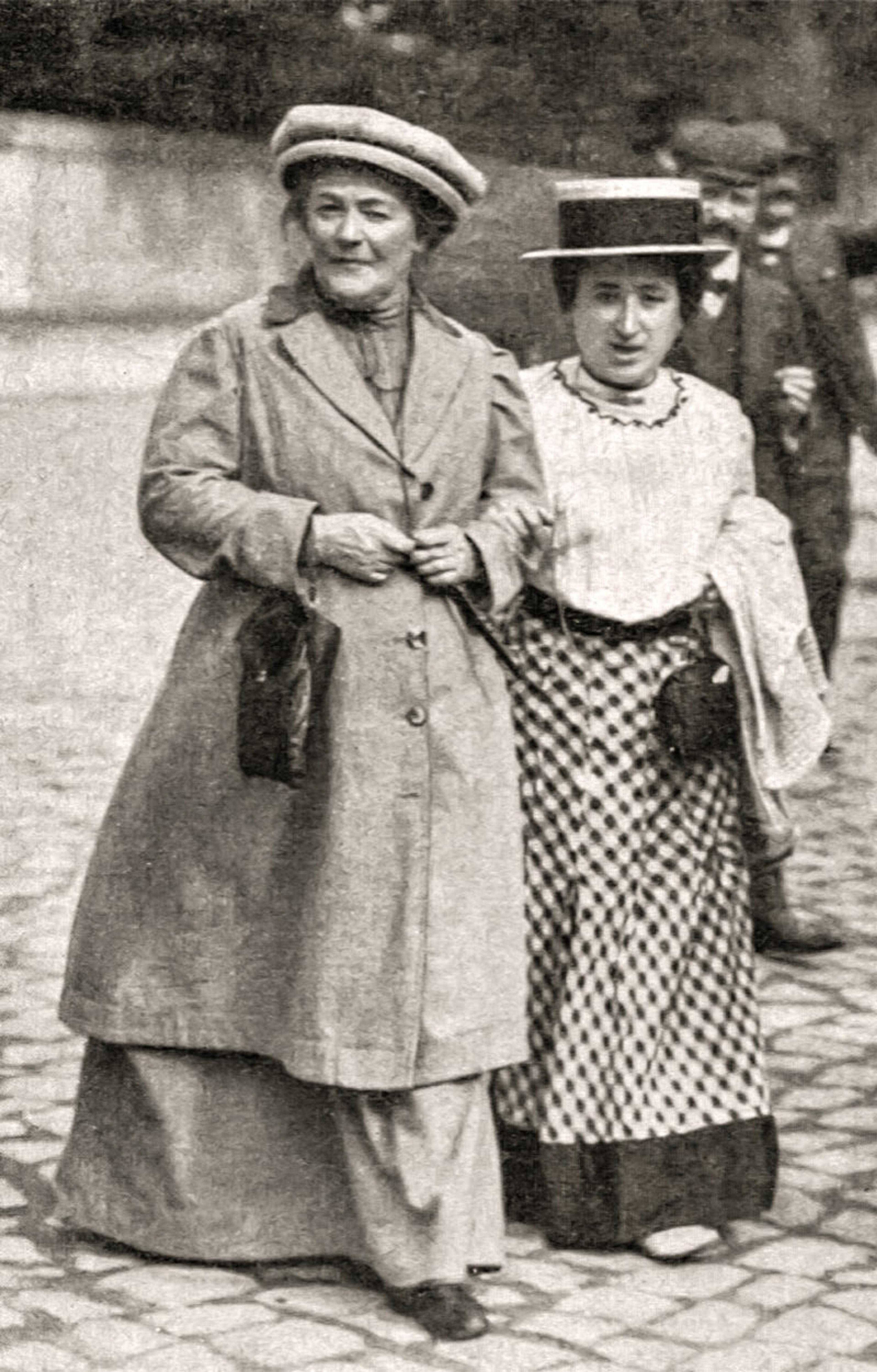
Clara Zetkin (left) and Rosa Luxemburg on their way to the SPD Congress. Magdeburg, Germany, 1910. Photo courtesy Wikipedia
Hedwig Dohm, who was writing in the same period as Salomé – and was an active member of her circle – started confronting the way philosophers and political theorists talk about women. Her work strips bare the shallow rhetoric of misogyny in the philosophical lineage from Kant and Fichte to Nietzsche. Dohm’s wit is sharp, her outing of Nietzsche’s poor thinking about women even sharper. What is going on, she asks, when smart male philosophers turn to the subject of women? Do they simply lose their critical spirit and delve into hyper-conventional rants about the inferiority of women’s intellects?
Many of the male philosophers whose works are now canonical were explicit in their rejection of women’s intellectual potential – ie, the intellectual potential of half of humankind. Kant, for example, claims that women are more interested in showing off their jewellery to men than in learning. The obvious paradox here seems to escape Kant: if other philosophers react to learned women in the same way that he does, then little is gained by carrying around a book. In this case, the book must surely be brought for reading. Fichte, in turn, denies that women can pursue science, philosophy and universal arguments, and claims that women’s writings should be limited to special women’s literature. Along similar lines, we read in Hegel that women may well be educated, but they are not made for science or philosophy. Indeed, as he sees it, they are as placid as plants.
Kant, Fichte, Hegel and Nietzsche were likely familiar with these debates and deliberately responding to them
A bit later in the century, Schopenhauer observes that one needs only to look at women to realise that they are not created for great mental labour. If women think they are valuable, he claims, they are best compared to the monkeys in the temples of Varanasi (!) In a similar vein, Nietzsche opposes women and truth, and compares women with cats and birds or, at best, cows.
Vain, silly, irresponsible or not quite human – at least not as human as men are. There is, it seems, no shortage of derogatory comments on women among 19th-century philosophers. These are the philosophers we still read (and teach) today. The standard approach to remarks such as the ones above has been that these philosophers were simply children of their time; that they passively reproduced the prejudices of the era and that these sections of their works are best buried in the dust of history. But as shown by the examples of Holst, Günderrode, Zetkin, Dohm and others, it was not the case that the philosophers could not know better.
There was a comprehensive discussion of women’s roles and learning throughout the 19th century, and highly intelligent men such as Kant, Fichte, Hegel and Nietzsche are likely to have been familiar with these debates and deliberately responding to them. (Minimally, we can assume that Kant, Fichte and Hegel were familiar with the work of the Königsberg jurist, Theodor von Hippel, who argued that women are capable of study and that their studies have been stymied by men.) From this point of view, the views defended by these philosophers were not passively adopted but actively endorsed: among the approaches available to them – some progressive for the time, some not – these were the ones they chose. And, as Dohm argues, the philosophers must be held accountable for their choices.
It is not easy to lead your life as a wandering contradiction in terms. And a contradiction in terms was, indeed, how leading male philosophers had pitched the idea of a woman philosopher. Yet the women prevailed.
At the beginning of the century, women had very few opportunities to receive a formal education. Their education was left to progressive families that were able to hire tutors and conversation partners for their daughters (eg, Germaine de Staël). Others relied on brothers, parents, grandmothers (the intellectual powerhouse Sophie von la Roche was the grandmother of Bettina Brentano von Arnim), and friends (Rahel Levin Varnhagen and Henriette Herz). Luxemburg left her native Poland and (as mentioned) received her PhD from the University of Zurich, where women were allowed to formally enrol. Salomé, too, had a stint at the University of Zurich. Anna Tumarkin, the first female professor of philosophy in Europe, was hired at the University of Bern in 1909. Even though Tumarkin had the right to advise graduate students, she was an ‘extraordinary professor’ and didn’t fully share the academic privileges of regular professors.
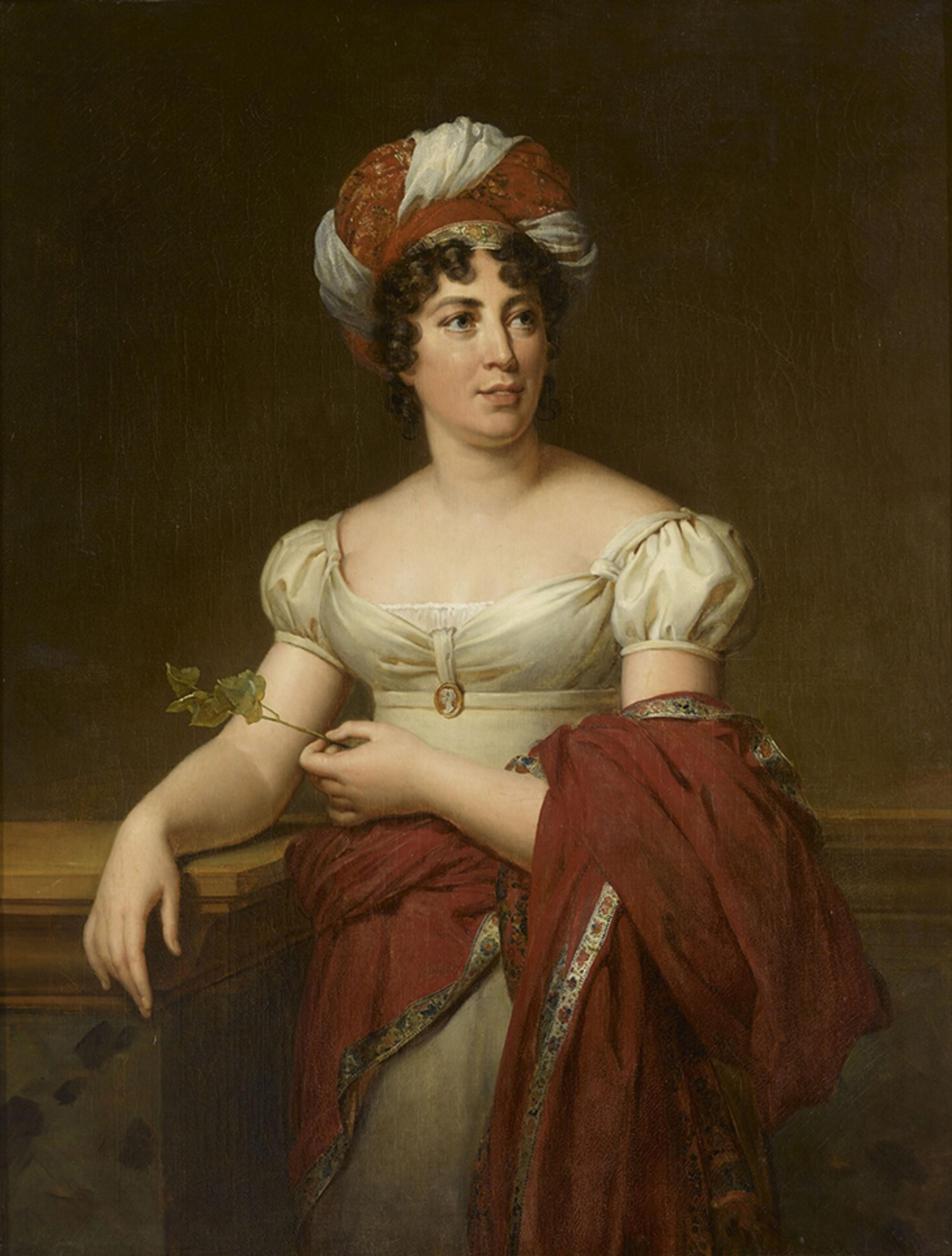
Portrait of Germaine de Staël (c1818-1849) by Marie-Éléonore Godefroid. Courtesy Wikipedia
The situation in Germany was more backwards than in Switzerland. It was only after the appeal of Edith Stein, who had not been able to defend her habilitation (the second dissertation needed to get an academic position in Germany), that the Prussian Ministry ruled in 1920 that ‘membership in the female sex’ should not be an obstacle to habilitating at German universities. It would take another 30 years before the first woman habilitated in philosophy in Germany. Liselotte Richter defended her habilitation at the University of Berlin in 1946, and became a professor of philosophy in the winter semester of 1947-48. Katharina Kanthack had submitted her habilitation at the Free University in Berlin before Richter, in 1933, but was not able to defend it until 1950 on account of the war.
Napoleon had her exiled first from Paris and later from France. He also said women should stick to knitting
The odds were stacked against them. Yet many women philosophers – even the ones who were later pushed into oblivion – were extraordinarily successful in their time. This goes for the beginning of the century and for its end. Early in the century, Staël’s On Germany (1810) was published with a print run of no fewer than 10,000 copies (though Napoleon destroyed the first batch before the books could leave the publishing house, and it was re-published in 1813). Her work was quickly translated and inspired feminists (Margaret Fuller was sometimes seen as a Yankee Corinne), abolitionists (Lydia Maria Child), and the transcendentalist movement (Ralph Waldo Emerson). New England intellectuals such as George Bancroft and George Ticknor left for their studies in Göttingen with Staël’s work as their travel companion (the latter even met Staël in Paris). Brentano von Arnim’s Günderode (1840) was swiftly translated into English (again by Fuller, who went on to compose an essay on the book for The Dial – the journal she co-edited with Emerson). At the end of the century, we see women benefit from blind review. In 1912, the 24-year-old Hedwig Conrad-Martius won a blindly peer-reviewed prize at Göttingen – a victory that was reported as far away as The San Francisco Examiner. Even such victories, hard won as they were, did little to change ingrained patterns of misrecognition.
In 1813, a reviewer of Staël’s On Germany was baffled by the fact that this metaphysical treatise was written by a woman. Napoleon had her exiled first from Paris and later from France. He also said women should stick to knitting. There is nothing wrong with knitting. But there is also nothing wrong with the idea of a woman philosopher. Yet a century later, the international news reports of Conrad-Martius’s prize couldn’t help mentioning ‘the round, pleasant features of an everyday German hausfrau’, who was among ‘the cleverest brains of Germany’. How much progress was made during those 100 years? And how much progress has been made between Conrad-Martius’s philosophy prize and our failure to pay attention to women philosophers today?
We must, it seems, ask ourselves some uncomfortable question about this forgetfulness. Why and how did it happen? Was it done intentionally? Are we – in our practices as philosophers and historians of philosophy – continuing to perpetuate it? Are we, deliberately or not, recirculating muted versions of the attitudes we found in the works of Kant, Fichte, Hegel, Schopenhauer and Nietzsche? And, if so, what is the price we have to pay for allowing such attitudes to thrive?
Leaving out the works of women philosophers is, no doubt, an injustice. However, by doing so, we also deprive ourselves of access to a host of positions and arguments – and of a full understanding of the movements and schools that are generally said to have shaped the long 19th century.
Take the example of the phenomenological movement that thrived towards the very end of the long 19th century and the first half of the 20th. In this period, Stein, Conrad-Martius and Gerda Walther all studied with Edmund Husserl. Yet they were more than students of Husserl. They went their own ways, often criticising and going beyond his approach and methodology. In spite of her short life (Stein was deported to Auschwitz in 1942), Stein’s philosophical contribution is vast. Most well known is her study of empathy. In contrast to Husserl, Stein argues that empathy is at the very core of intersubjective relations, and sees it as part of our experience of the living world, including plants and animals.
Like Salomé, Stein places the embodied human being at the centre of her research. Walther’s dissertation (and book) on intersubjectivity challenges both Stein and Husserl. She synthesises her socialist intuitions and her phenomenological commitments, arguing that empathy is not foundational but enabled by a profound experience of community. Conrad-Martius worked at the intersection of vitalism and phenomenology, and was one of the few phenomenologists to seriously engage with the life sciences of her time, posing questions concerning evolution and the relationship between the organic and inorganic. With her husband and their wider circle, Conrad-Martius sought to establish a phenomenological alternative to Martin Heidegger, whose position was also criticised by Stein and whose political judgment leaves much to be desired.
Neither the misogyny, nor the exclusion was due to philosophers and historians being blinded by their times
The women who made it as philosophers were like flowers growing in the cracks between the pavement stones: they mostly emerged in spite and not because of the conditions under which they were raised. The landscape in which they sought to settle was barren; the conditions of growth were harsh. In fact, many women philosophers reflect on this. Staël, for example, observes how women are often forgiven for gossiping and carelessness in household duties. By contrast, should a woman seek renown by publishing a great work of philosophy or literature, she is quickly taken down – by men and by women who are subject to implicit bias. A long a century later, Stein tells us how new women students had trouble finding housing: who would want to house an anomaly who, in addition, to doing philosophy might ask to borrow an ironing board or bring back a special companion late at night?
Neither the misogyny, nor the exclusion from the history of philosophy was due, simply, to philosophers and historians being blinded by their times. They had alternatives. They chose to ignore them. And, what is more, this happened at the same time as women started to demand access to higher education and the modern women’s movement found its present form. But historical mistakes need not be repeated. Engrained traditions and patterns can be repaired. Indeed, thematising the power of tradition – and the need, at times, to emancipate ourselves from oppressive beliefs by turning to overlooked ideas, figures or expressions – is one of the main contributions of 19th-century philosophy. This applies to Kierkegaard, Marx and Nietzsche. It also applies to Staël, Günderrode, Salomé, Luxemburg, Stein, Fanny Lewald and the many other women philosophers of the period.
The fact that women philosophers were overlooked in the history of philosophy does not mean that we, today, need to continue such malpractices. That would be historically inaccurate and intellectually dishonest. And it would blind us to the various ways in which philosophical positions and arguments were developed – often in exciting and radical ways – by these women. Needless to say, women have been only one marginalised group in philosophy. We know far too well that other groups have suffered similar fates, and work is now being done to offer much-delayed recognition.
The canon of 19th-century philosophy is not static. No canon is. Our understanding of the 19th century has expanded, and it will, hopefully, continue to expand, including not only women, but also other underrepresented groups. Closing the doors to the pantheon would be nothing short of poor philosophy. To follow the old masters in sealing off thought along gender lines would be even worse.
